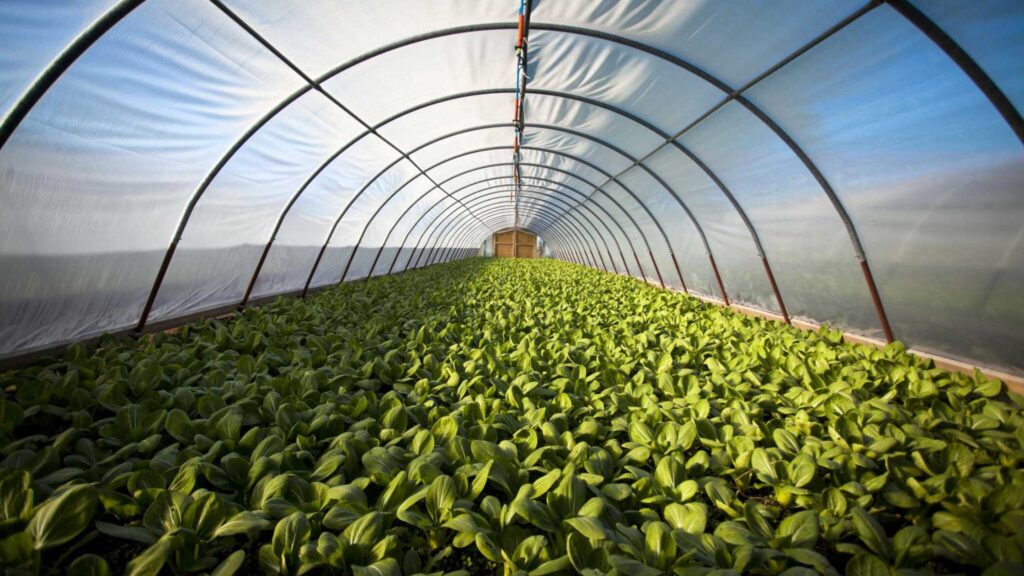Introduction
Millions of people worldwide rely on agriculture and farming for their food and livelihoods, making it the foundation of our society. However, a significant hazard to crop health and productivity is the unpredictable nature of weather patterns, especially excessive rains. In the end, severe rain can threaten food security and farmer incomes by causing waterlogging, erosion, nutrient leaching, and increased susceptibility to illnesses. We will explore practical strategies to shield crops from the damaging impacts of heavy rain, guaranteeing agriculture’s resilience and sustainability.
Understanding the Impact of Heavy Rain
Before implementing preventative measures, it is imperative to understand the impact that heavy rainfall might have on crops. Among the main consequences, the critical effects of heavy rain on crops include:
- Waterlogging: When too much rain falls, the soil becomes saturated and causes waterlogging. This deprives plant roots of oxygen, which slows down growth and eventually results in wilting and death.
- Soil Erosion: Heavy rains can remove topsoil, which depletes vital nutrients and exposes crops to nutrient deficits and decreased fertility.
- Nutrient Leaching: Excessive rainfall can remove essential nutrients from the soil, including potassium, phosphate, and nitrogen, reducing soil fertility and hindering plant development.
- Disease Spread: Following intense rain, moist conditions foster the growth of bacterial and fungal infections, raising the danger of crop illnesses.
Now that we are aware of the difficulties caused by heavy rain let’s examine practical methods for safeguarding crops:
Site Selection and Land Preparation:
Strategic site selection and land preparation are the initial steps in protecting crops from severe rain:
Select locations with slopes and good drainage to encourage water runoff and avoid waterlogging.
– Level and contour the land appropriately to reduce soil erosion and encourage adequate water drainage.
– Put techniques like terracing, bunding, and swales in place to manage surface water flow and stop soil erosion.
Soil Management:
Crop resilience in the face of intense rains depends critically on maintaining the health of the soil. Consider the following soil management techniques:
– Increase soil porosity and structure by using cover crops, adding organic matter, and doing routine tillage to improve water infiltration and lessen compaction.
– Use organic mulches, such as compost, hay, or straw, to prevent soil surface erosion and lessen evaporation-induced moisture loss.
– Use conservation tillage techniques, such as reduced or no-till farming, to reduce soil disturbance and maintain soil structure during periods of intense precipitation.
Drainage Systems:
It is imperative to install efficient drainage systems to mitigate the negative impacts of heavy rain and prevent waterlogging. Take into account these drainage options:
– To lower the water table and make removing surplus water from the root zone easier, install subsurface drainage pipes or tiles.
To divert surface runoff away from fields and avoid waterlogging, build open ditches or channels.
– Create ridges or raised beds to increase drainage and raise crop roots above flooded regions.
Crop Selection and Rotation:
Crop rotation and suitable variety selection can reduce related hazards and increase resistance to heavy rain:
Choose crop cultivars that can fight disease and survive waterlogging to meet the demands of severe rainfall.
Crop rotation is switching between crops with different root depths and growth habits to disrupt disease cycles, enhance soil health, and diversify risk.
Mulching and Cover Cropping:
Effective methods for preserving soil moisture, avoiding erosion, and inhibiting the growth of weeds are mulching and cover crops:
– Cover the soil’s surface with organic mulches, such as straw, shredded leaves, or grass clippings, to lessen the effects of heavy rain on nutrient leaching and soil erosion.
– During fallow periods, plant cover crops like grasses or legumes to improve soil structure, preserve the soil, and encourage nutrient cycling.
Structural Protection:
Aside from agronomic techniques, structural protection can offer additional security against prolonged precipitation:
– Use trees or bushes to create windbreaks or shelterbelts to slow down the wind and lessen soil erosion from heavy downpours.
When significant rainfall is predicted, cover susceptible crops with protective coverings or rain shelters to minimize damage and avoid waterlogging.
Conclusion
The productivity and sustainability of agriculture are seriously threatened by heavy rain, which also jeopardizes crop health and harvests. Farmers can protect crops from the damaging impacts of excessive rain and advance resilience by combining strategic techniques such as site selection, soil management, drainage systems, crop selection, and structure protection. Taking preemptive steps to shield crops from heavy rain is becoming increasingly necessary as we navigate the uncertainties of climate change to ensure food security and livelihoods for both current and future generations.

